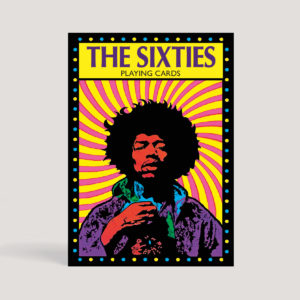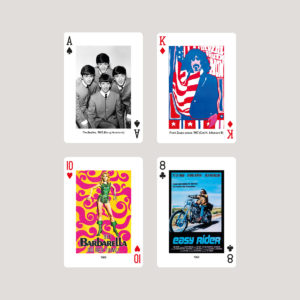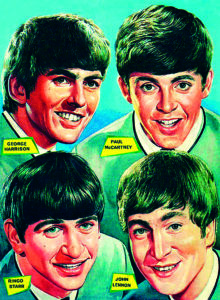 THE SIXTIES ‘It was the time of my time. I will never have so much fun again, ever.’ Even back then Michael Caine knew ‘it was the good old days’. ‘What we decided was f*ck it, leave your baggage of class, colour and religion at the door…’ It was the best of times. For some. The ‘pill’ liberated women, Mary Quant and the mini skirt liberated legs, Vidal Sassoon liberated hair, the Mini liberated the road, the constrictions of girdles and sombre suits disappeared, the constrictions of class tumbled. Yet as David Bailey pointed out Swinging London was tiny – 500 people and three nightclubs.
THE SIXTIES ‘It was the time of my time. I will never have so much fun again, ever.’ Even back then Michael Caine knew ‘it was the good old days’. ‘What we decided was f*ck it, leave your baggage of class, colour and religion at the door…’ It was the best of times. For some. The ‘pill’ liberated women, Mary Quant and the mini skirt liberated legs, Vidal Sassoon liberated hair, the Mini liberated the road, the constrictions of girdles and sombre suits disappeared, the constrictions of class tumbled. Yet as David Bailey pointed out Swinging London was tiny – 500 people and three nightclubs.
‘Being from the other side of the tracks was suddenly the thing to be,’ remembered Terry O’Neill, the photographer. ‘And we made the most of it. We all used to go to the Ad-Lib Club, off the King’s Road – the Beatles, Stones, Jean Shrimpton, Twiggy [an ‘elongated matchstick’]. None of us thought it was going to last, we assumed it was all a dream, we’d suddenly wake up and be back at the labour exchange. But the weird thing was, we never woke up.’ Trophy men, trophy women, trophy cars. When musician John Barry married the actress Jane Birkin in 1965, Newsweek reported that he ‘drove off in his E-Type Jag with his E-Type wife’.
Grim London terraces were suddenly ‘gentrified’, painted matt blue or pink and pop aristocracy like The Who or The Kinks moved in. April 1966 was when Time magazine officially anointed London ‘The Swinging City’, making it the hip Mecca. The Beatles were key to this cultural revolution: not just key to music – though The Times likened the ‘outstanding composers’ Lennon and McCartney to Schubert – but to hairstyles, clothes and cheeky irreverence, which saw its comedic apotheosis in Lenny Bruce’s scurrilous (and often banned) satire. Lennon’s psychedelic Rolls was a two-finger gesture, saying ‘I now have what you have’ less the grey restraint. It was an iconoclastic pop/op art explosion mirrored by Warhol and Lichtenstein, Bridget Riley and Peter Blake…
Philip Larkin’s famously wrote: Sexual intercourse began / In nineteen sixty-three… Between the end of the ‘Chatterley’ ban / And the Beatles’ first LP. The Rolling Stones, London’s aggressive answer to Liverpool’s Beatles, sang ‘Let’s Spend the Night Together’, a hymn (1967) to something your parents loathed, guiltless sex. Caine remembered: ‘There was just so much sex… If you were cheeky you had a great time. All my friends from the East End couldn’t believe all the p*ssy I was getting. They thought I dressed like a poof, but they started to see why when they saw how much I was getting.’
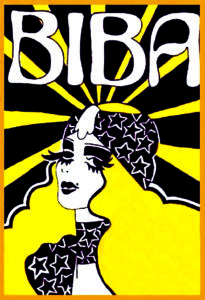 In 1963, for the first time, there were more young people than old, a powerful economic and cultural force, creating the Sixties paraphernalia of flower power, LSD, free love… The hippies of Haight-Ashbury, with their foul-smelling Afghan coats, spawned a universal fashion, but other trends vied – like the elegant style of Jackie O, the youthful Quant look and the Space Age chic of Cardin. Menswear saw vibrant colour and retro pattern, as at the King’s Road boutique Granny Takes a Trip. Old military uniforms were snapped up by urban peaceniks at nearby I Was Lord Kitchener’s Valet (where Hendrix shopped) and feather boas and pith helmets at Kleptomania – ‘an incense-filled, hippified haven,’ according to its weirdo owner, where ‘any customer coming through the door and spoiling the vibes was an inconsiderate nuisance’.
In 1963, for the first time, there were more young people than old, a powerful economic and cultural force, creating the Sixties paraphernalia of flower power, LSD, free love… The hippies of Haight-Ashbury, with their foul-smelling Afghan coats, spawned a universal fashion, but other trends vied – like the elegant style of Jackie O, the youthful Quant look and the Space Age chic of Cardin. Menswear saw vibrant colour and retro pattern, as at the King’s Road boutique Granny Takes a Trip. Old military uniforms were snapped up by urban peaceniks at nearby I Was Lord Kitchener’s Valet (where Hendrix shopped) and feather boas and pith helmets at Kleptomania – ‘an incense-filled, hippified haven,’ according to its weirdo owner, where ‘any customer coming through the door and spoiling the vibes was an inconsiderate nuisance’.
When the Time article appeared, Antonioni was shooting Blow-Up in London, whose eclectic zaniness captured the times, times of adolescence and attitude. Easy Rider (1969) later captured the American zeitgeist, what Saul Bellow called the ‘melancholy of affluence’.
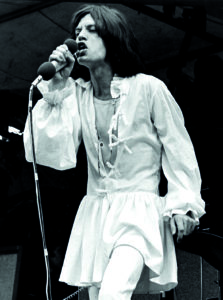 Music, and The Beatles, stand out from the Sixties; The Beatles influenced all who came after, Pink Floyd, Led Zeppelin… Procol Harum’s Whiter Shade of Pale, with its Bachian organ line, was the hymn of the Summer of Love (1967) and its lyrical confusion seemed to mirror the era, an era of both war (Vietnam) and Woodstock. But in this Golden Age what was the best-selling UK single of 1965, the year of the brilliant Beatles album Rubber Sole, featuring Lennon’s Norwegian Wood (with George’s sitar instrumental)? Tears, a schmaltzy bit of tosh by Ken Dodd. Bob Dylan sang The Times, They Are A-Changin’ in 1965. Not for everyone they weren’t. ‘The Swinging Sixties did not swing in Lambeth,’ wrote John Major in his memoirs. But for me, driving down the King’s Road in a psychedelic Moke in May ’67 with Sgt Pepper in my ears, ‘Bliss was it in that dawn to be alive / But to be young was very heaven!’ As I tottered into Alvaro’s restaurant in my Cubans and flares I must have looked a dork. But so did everybody else. Because we all rushed to buy what everyone else was wearing, to look different.
Music, and The Beatles, stand out from the Sixties; The Beatles influenced all who came after, Pink Floyd, Led Zeppelin… Procol Harum’s Whiter Shade of Pale, with its Bachian organ line, was the hymn of the Summer of Love (1967) and its lyrical confusion seemed to mirror the era, an era of both war (Vietnam) and Woodstock. But in this Golden Age what was the best-selling UK single of 1965, the year of the brilliant Beatles album Rubber Sole, featuring Lennon’s Norwegian Wood (with George’s sitar instrumental)? Tears, a schmaltzy bit of tosh by Ken Dodd. Bob Dylan sang The Times, They Are A-Changin’ in 1965. Not for everyone they weren’t. ‘The Swinging Sixties did not swing in Lambeth,’ wrote John Major in his memoirs. But for me, driving down the King’s Road in a psychedelic Moke in May ’67 with Sgt Pepper in my ears, ‘Bliss was it in that dawn to be alive / But to be young was very heaven!’ As I tottered into Alvaro’s restaurant in my Cubans and flares I must have looked a dork. But so did everybody else. Because we all rushed to buy what everyone else was wearing, to look different.
